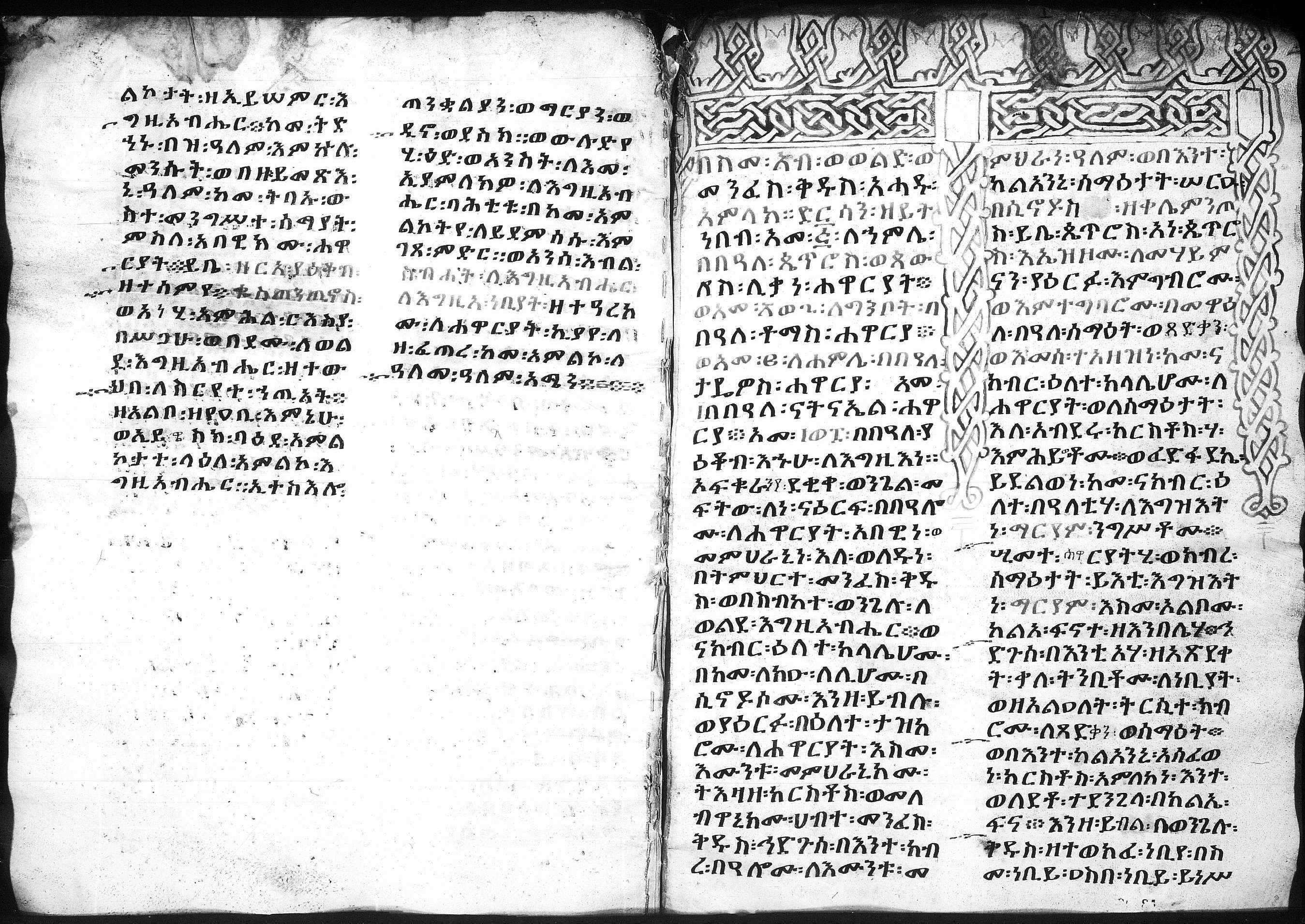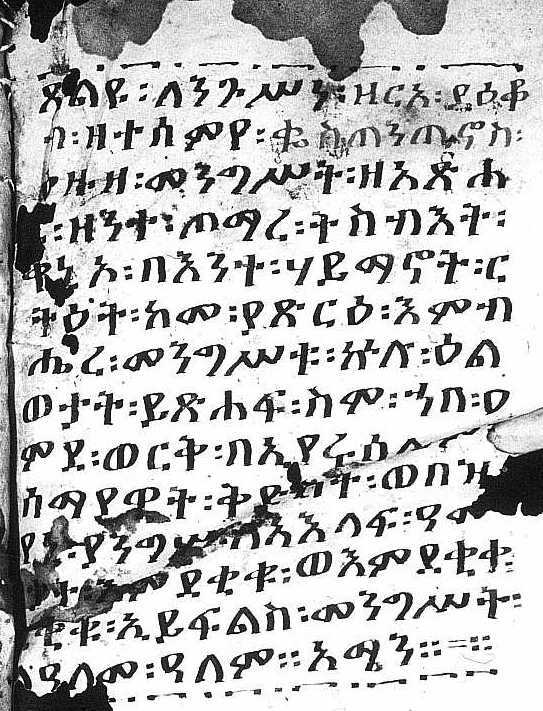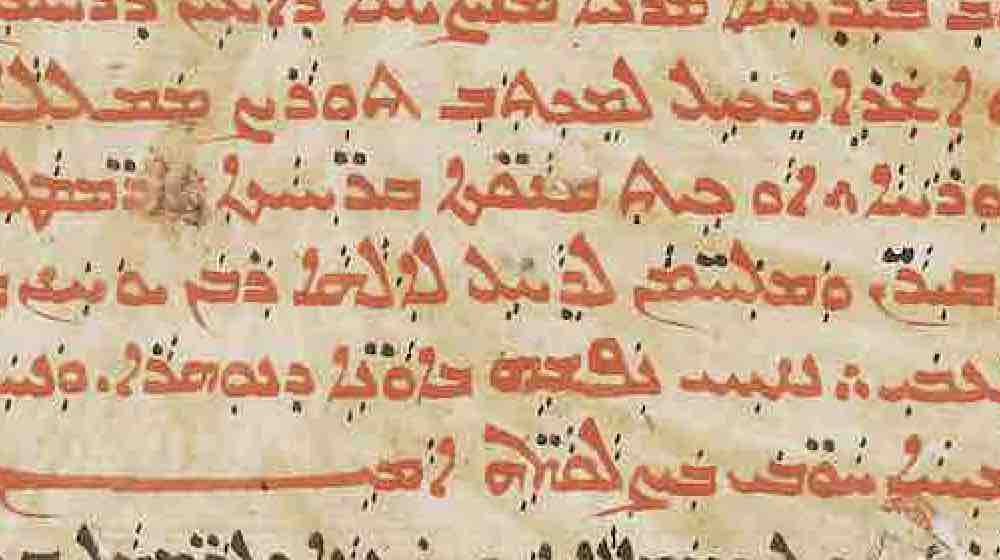The Emperor’s Manuscript
The Emperor’s Manuscript
Towards the end of Getatchew Haile’s first published catalog of Ethiopic manuscripts we come across a remarkable item, one among the five or ten most famous in the entire Ethiopian Manuscript Microfilm Library (EMML) project.
The importance of EMML 1480 is multifaceted, and its provenance cannot go overlooked. When microfilmed nearly fifty years ago, it belonged to the monastery of Dabra Māryām in Eritrea. While tens of thousands of Ethiopic manuscripts exist in the ecclesiastical and secular libraries of that country (which, at the time, was a province of Ethiopia), microfilm or digital surrogate copies of less than a dozen of them are available to scholars. EMML 1480 is among those precious few.

EMML 1480’s earlier history is also notable. While the circumstances by which the manuscript came to Dabra Māryām are unknown, it is clear that the codex was manufactured in the mid-fifteenth century during the 1434–1468 reign of Emperor Zar’a Yā’eqob, as numerous references to him as the contemporary king in prayers and supplications attest. In fact, it is possible that this particular volume was produced on the king’s personal orders, perhaps even at the royal camp.
This origin makes all the more significant the contents of EMML 1480 and their value, which would have been enormous even if in a manuscript from a much later time. Almost all of documents are from Zar’a Yā’eqob, either composed by the emperor himself directly or by members of his royal clergy at his instigation in order to further his theological program. Since one ritual text claims to have been written in the eighth year of his reign, the manuscript can be dated to between 1442 and 1468. This narrow, quarter-century timeframe means that its witness to such texts lies only a few decades or years removed from their origins.
The proximity of this volume to Zar’a Yā’eqob spatially and temporally only begins to hint at its importance. Indeed, on more than half of its pages are writings yet to be attested anywhere else, among them several from Zar’a Yā’eqob, including his Ṭomāra Tesbe‘t (“Epistle of humanity”). Scholarship had long known this title, mentioned in several other Ethiopic texts, but had never had access to a copy of the work itself, which consists of a trio of tractates against magical practices and divination.
During his reign, Zar’a Yā’eqob sought to impose a particular form of religious orthodoxy across his dominions, attempting to eradicate divergent viewpoints and sects. Many opposed his positions, however, and in these writings there are repeated references and other allusions to figures deemed heretical. These documents have therefore contributed enormously to our understanding of the religious controversies of the era (especially about the Trinity, the Sabbath, and Mary), some of the figures involved, and how Zar’a Yā’eqob tried to deal with them, especially in the ecclesiastical quarter.
On occasion, however, the historical insights provided by these unique texts are even more significant, for Ge’ez literature is principally religious in disposition, and indigenous sources on contemporary events are rare. One notable case appears in the middle of the Ṭomāra Tesbe’t, where a plot against Zar’a Yā’eqob by several nobles is described in extensive detail. This striking exception to the usual course of affairs hints that opposition to the despotic emperor and his religious reforms may have been widespread.
The significance of this material was well known to its cataloger, Professor Getatchew Haile, who devoted much energy in his early years at HMML to the publication and translation of unique texts from EMML 1480 so that they could be properly appreciated and integrated into future scholarship. Later on, in 1991, Getatchew would publish the entire Ṭomāra Tesbe‘t, the crowning achievement to more than a decade of work on this remarkable manuscript.

Further Reading:
Getatchew Haile, “A preliminary investigation of the Ṭomarä Tәsbә't of Emperor Zär’a Ya'әqob of Ethiopia,” Bulletin of the School of Oriental and African Studies 43 (1980): 207-34.
Getatchew Haile, “A Study of the Issues Raised in Two Homilies of Emperor Zär'a Ya'әqob of Ethiopia,” Zeitschrift der Deutschen Morgenländischen Gesellschaft 131 (1981): 85-113.
Getatchew Haile, “The Homily of Ase Zär'a Ya'eqob of Ethiopia in Honour of Saturday,” Orientalia Lovaniensia Periodica 13 (1982): 185-231.
Getatchew Haile, “The Life of Abunä Yosṭinos (EMML 1480, ff. 44r-47r),” Analecta Bollandiana 101 (1983): 311-325.
Getatchew Haile, “The Homily of Zär'a Ya'əqob in Honour of St. John the Evangelist, EMML 1480, ff. 48r-52v,” Oriens Christianus 67 (1983): 144-66.
Getatchew Haile, The Mariology of Emperor Zär'a Ya'əqob of Ethiopia: Texts and Translations. Roma: Pontificium Institutum Studiorum Orientalium, 1992.
Getatchew Haile, The Epistle of Humanity of Emperor Zär'a Ya'əqob (Ṭomarä Tǝsbǝ’t). Lovanii: E. Peeters, 1991. (2 vols.)




